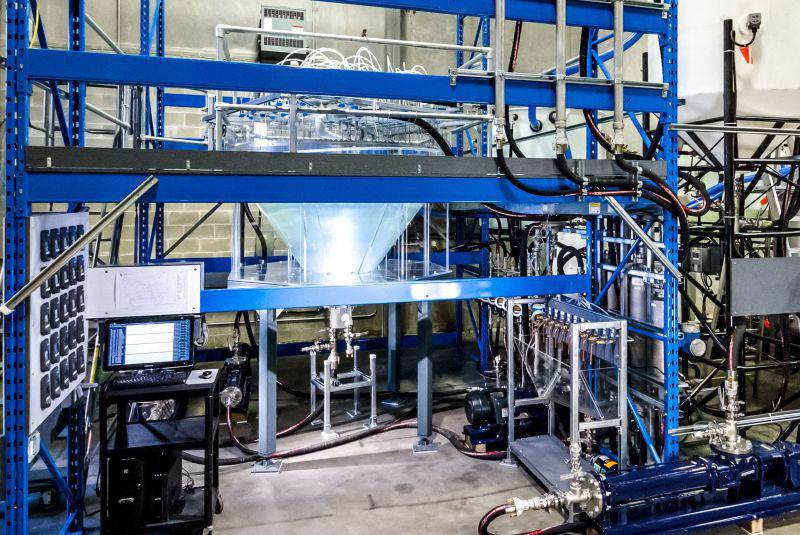Deriving Value
Many industrial processes require that two discrete phases interact with one another under controlled conditions to afford a particular interaction, such as a chemical reaction or a diffusional process. This requires the phases be mixed. In other cases, the starting material is a mixture, in which only one sub-component is of commercial value.

multiphase separation process flow loop
Exploiting Physics
In either case, the second law of thermodynamics dictates that work must be done to reverse the mixing process, recovering the component of interest. All separation processes exploit differences in the physical, chemical, and thermodynamic properties of the individual components.
Where the phases are discrete, body forces can be applied to system, introducing differential forces onto the individual phases that can initiate a separation. For dissolved species differences in chemical potential must be exploited through distillation or other techniques.
particle size analysis to quantify separation efficiency
separating particles for analysis
Coanda has extensive experience addressing challenging industrial separation problems. The approach applied is dependent upon the situation, and may involve the use of dimensionally-scaled physical modeling, mathematical techniques, or a combination of both.
Coanda maintains state-of-the-art infrastructure for assessing separation efficiencies, including laser-based technology for measuring droplet and particle size distributions, and radiation-based sensors for measuring density. In many circumstances fit-for-purpose instrumentation and measurements are developed in-house to provide insight into the problem not available using off-the-shelve equipment.
Some of the separation challenges that have been investigated by Coanda for our clients include:
- Gravity separation of solid particles from liquids. These systems have involved densification (thickening) zones, and multiple draws.
- Multi-phase gravity separators involving solids, gas, and multiple liquids
- Solids classification by elutriation
- Cyclonic separation (enhanced gravity) of solid-gas, liquid-gas, and liquid-liquid systems
- Impact separation
- Distillation tray design
- Novel separation techniques

